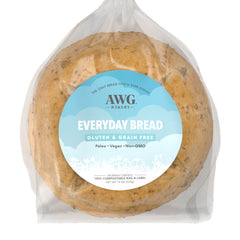Healthy Gluten-Free Bread: Baking Tips and Tricks for Success
In the world of baking, creating a loaf that is both delicious and nutritious can be a rewarding challenge. For those following a gluten-free diet, the task can seem even more daunting. Traditional bread recipes rely heavily on gluten to provide structure and elasticity, but with the right ingredients and techniques, you can achieve a loaf that is just as satisfying. This article delves into the secrets of crafting a healthy gluten free bread recipe, offering valuable tips and tricks to ensure your baking success. Whether you're a seasoned baker or new to the gluten-free lifestyle, these insights will help you create a loaf that is not only gluten-free but also packed with health benefits.
Use a Blend of Gluten-Free Flours
One of the keys to a successful gluten-free bread recipe is using a blend of gluten-free flours. Single flours often lack the necessary properties to mimic gluten, but combining different types can create a balanced texture. Popular choices include rice flour, almond flour, and tapioca flour. Experimenting with various blends can help you find the perfect mix for your bread.
Incorporate Binding Agents
Without gluten, your bread needs a little extra help to bind together. Incorporating binding agents such as xanthan gum or psyllium husk can provide the necessary structure. These ingredients act as a glue, holding your bread together and preventing it from crumbling. When following a healthy gluten-free bread recipe, make sure to measure these agents accurately to achieve the best results.
Add Moisture with Wet Ingredients
Gluten-free bread tends to be denser than its gluten-containing counterparts. Adding moisture through wet ingredients like eggs, applesauce, or yogurt can lighten the texture. These ingredients also contribute to the nutritional profile of your bread, making it healthier. In your bread recipe, consider using these moistening agents to enhance both texture and taste.
Allow for Proper Rising Time
Patience is crucial when baking gluten-free bread. Allowing sufficient rising time gives your dough the chance to develop flavor and structure. Using a warm, draft-free environment can help your dough rise more effectively. Follow your bread recipe closely and don’t rush the rising process for the best outcome.
Monitor Baking Temperature
Baking gluten-free bread requires careful attention to temperature. A lower and slower baking process can ensure even cooking and prevent a gummy texture. Using an oven thermometer can help you maintain the correct temperature. Adjusting the baking time and temperature according to your preference can make a significant difference in the final product.
Experiment with Flavors
One of the joys of baking is experimenting with flavors. Adding seeds, nuts, dried fruits, or herbs can enhance the taste and nutritional value of your gluten-free bread. Personalizing the recipe with these additions can make each loaf unique and enjoyable.
Using Right Ingredients
Baking a successful loaf of gluten-free bread is an art that combines the right ingredients with patience and practice. By using a blend of flours, incorporating binding agents, adding moisture, allowing proper rising time, monitoring baking temperature, and experimenting with flavors, you can master the craft. Following these tips and tricks ensures that your healthy gluten-free bread recipe will yield a delicious and nutritious loaf every time.





